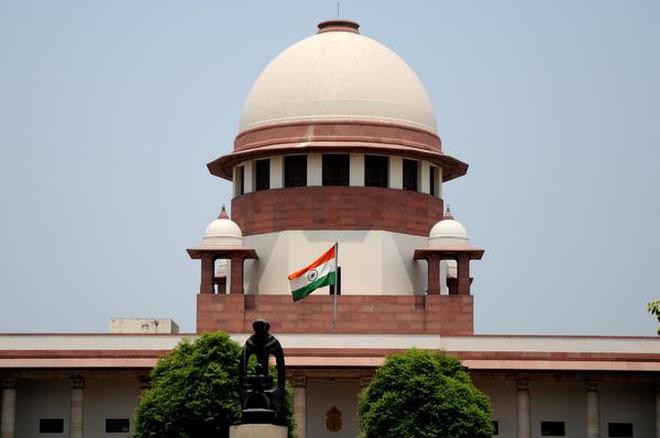Published: August 21, 2018
Talib Hussain, a key observer in the Kathua assault and murder case, has claimed custodial torment by police of him in an asserted assault body of evidence held up against him by his sister-in-law.

The Supreme Court on Tuesday guided the Jammu and Kashmir government to record its reaction to a supplication charging custodial torment of the Kathua group assault and murder case witness by August 27.
A Bench, including Chief Justice of India (CJI) Dipak Misra and Justices A.M. Khanwilkar and D.Y. Chandrachud, settled the issue for additionally hearing on August 29.
The court was hearing a request by Talib Hussain, a key observer in the Kathua case, asserting custodial torment by the State police in a claimed assault argument held up against him by his sister-in-law.
The court had approached the legal counselor showing up for Mr. Hussain's cousin, Mumtaz Ahmed Khan, to fulfill it on how a writ of habeas corpus (create the body) was viable in the present situation where the blamed was in legitimate police authority following a FIR being enrolled against him.
Insight had alluded to a Supreme Court judgment and said independent of the idea of detainment, regardless of whether lawful or illicit, such an appeal to could simply be documented in instances of custodial torment.
The request of was restricted by the legal advisor showing up for Mr. Hussain's sister-in-law who has documented the FIR affirming assault, that there were upwards of 10 FIRs against the blamed and no help ought to be conceded without hearing the casualty.
Appeal to charges fierce strike
The supplication looks for assurance for Mr. Hussain in police care and charges that he was fiercely whipped in the asserted assault case.
Mr. Hussain is a key observer in the Kathua case, in which an eight-year-old young lady from a minority itinerant network was snatched in January and posse assaulted before being executed.
The State police's Crime Branch, which tested the case, recorded the principle charge sheet against seven individuals and a different one against an adolescent.
The charge sheet had insights about the young lady being professedly grabbed, tranquilized and assaulted inside a position of love before being slaughtered.
The Supreme Court on Tuesday guided the Jammu and Kashmir government to record its reaction to a supplication charging custodial torment of the Kathua group assault and murder case witness by August 27.
A Bench, including Chief Justice of India (CJI) Dipak Misra and Justices A.M. Khanwilkar and D.Y. Chandrachud, settled the issue for additionally hearing on August 29.
The court was hearing a request by Talib Hussain, a key observer in the Kathua case, asserting custodial torment by the State police in a claimed assault argument held up against him by his sister-in-law.
The court had approached the legal counselor showing up for Mr. Hussain's cousin, Mumtaz Ahmed Khan, to fulfill it on how a writ of habeas corpus (create the body) was viable in the present situation where the blamed was in legitimate police authority following a FIR being enrolled against him.
Insight had alluded to a Supreme Court judgment and said independent of the idea of detainment, regardless of whether lawful or illicit, such an appeal to could simply be documented in instances of custodial torment.
The request of was restricted by the legal advisor showing up for Mr. Hussain's sister-in-law who has documented the FIR affirming assault, that there were upwards of 10 FIRs against the blamed and no help ought to be conceded without hearing the casualty.
Appeal to charges fierce strike
The supplication looks for assurance for Mr. Hussain in police care and charges that he was fiercely whipped in the asserted assault case.
Mr. Hussain is a key observer in the Kathua case, in which an eight-year-old young lady from a minority itinerant network was snatched in January and posse assaulted before being executed.
The State police's Crime Branch, which tested the case, recorded the principle charge sheet against seven individuals and a different one against an adolescent.
The charge sheet had insights about the young lady being professedly grabbed, tranquilized and assaulted inside a position of love before being slaughtered.


0 Comments